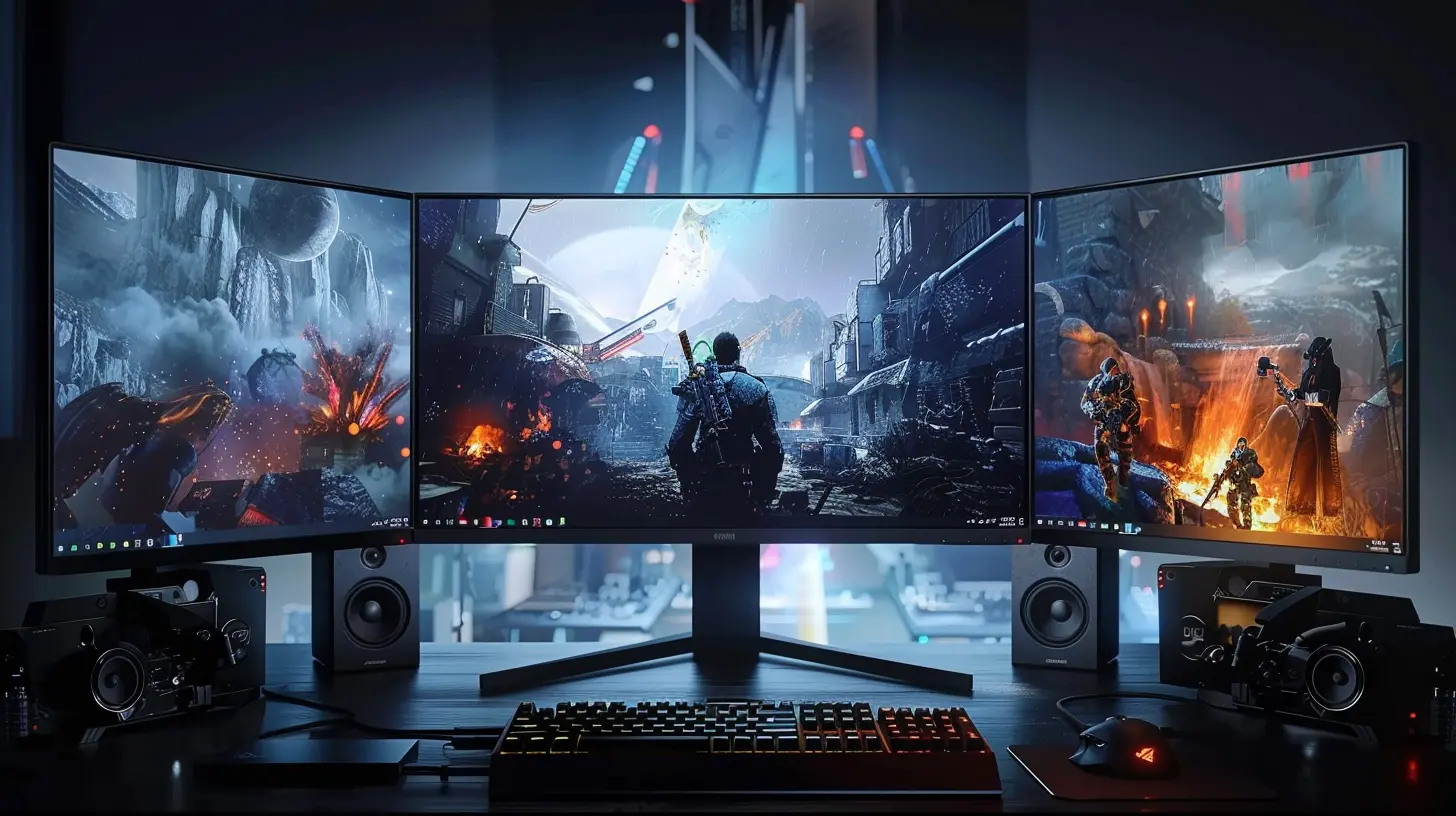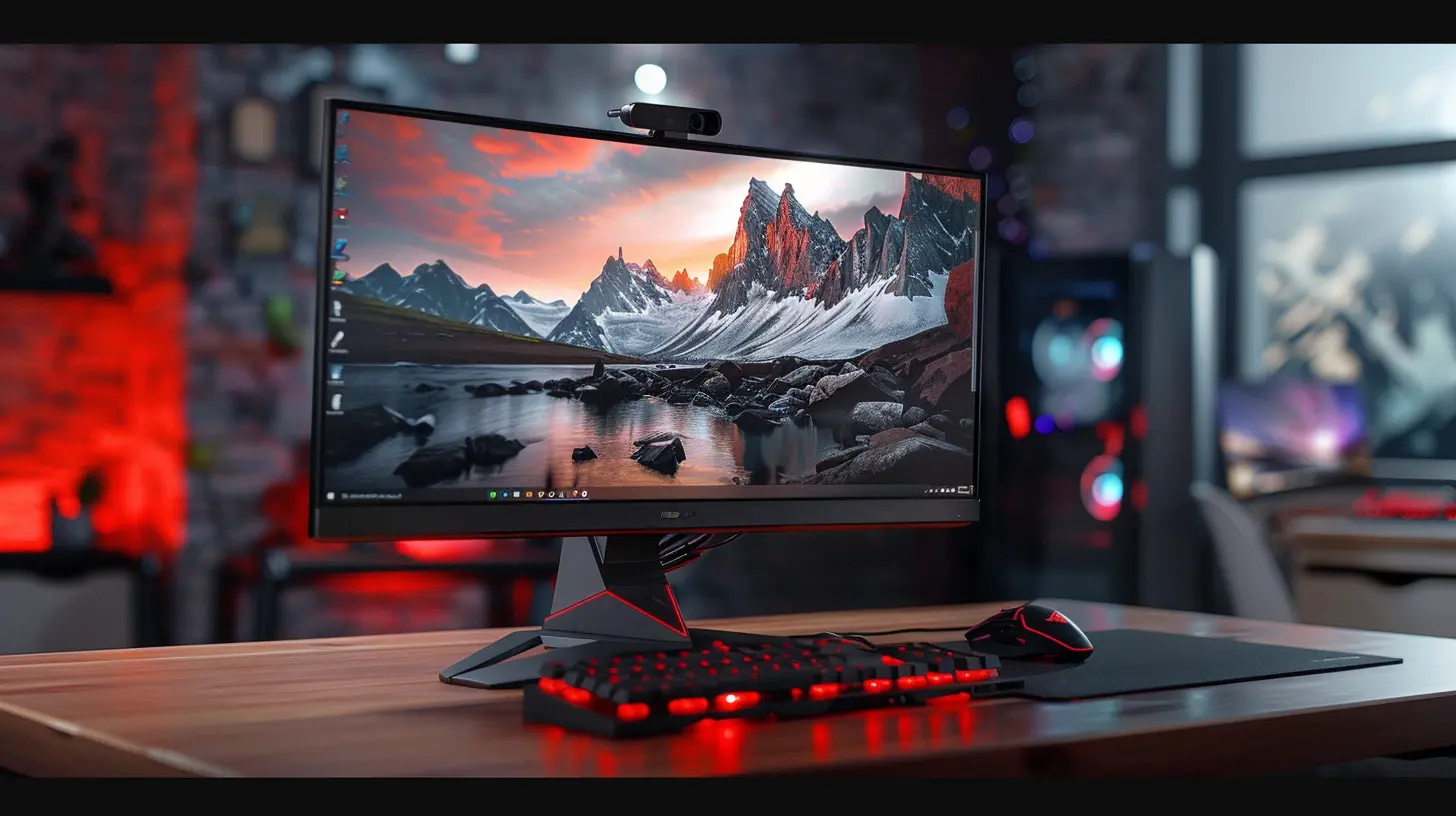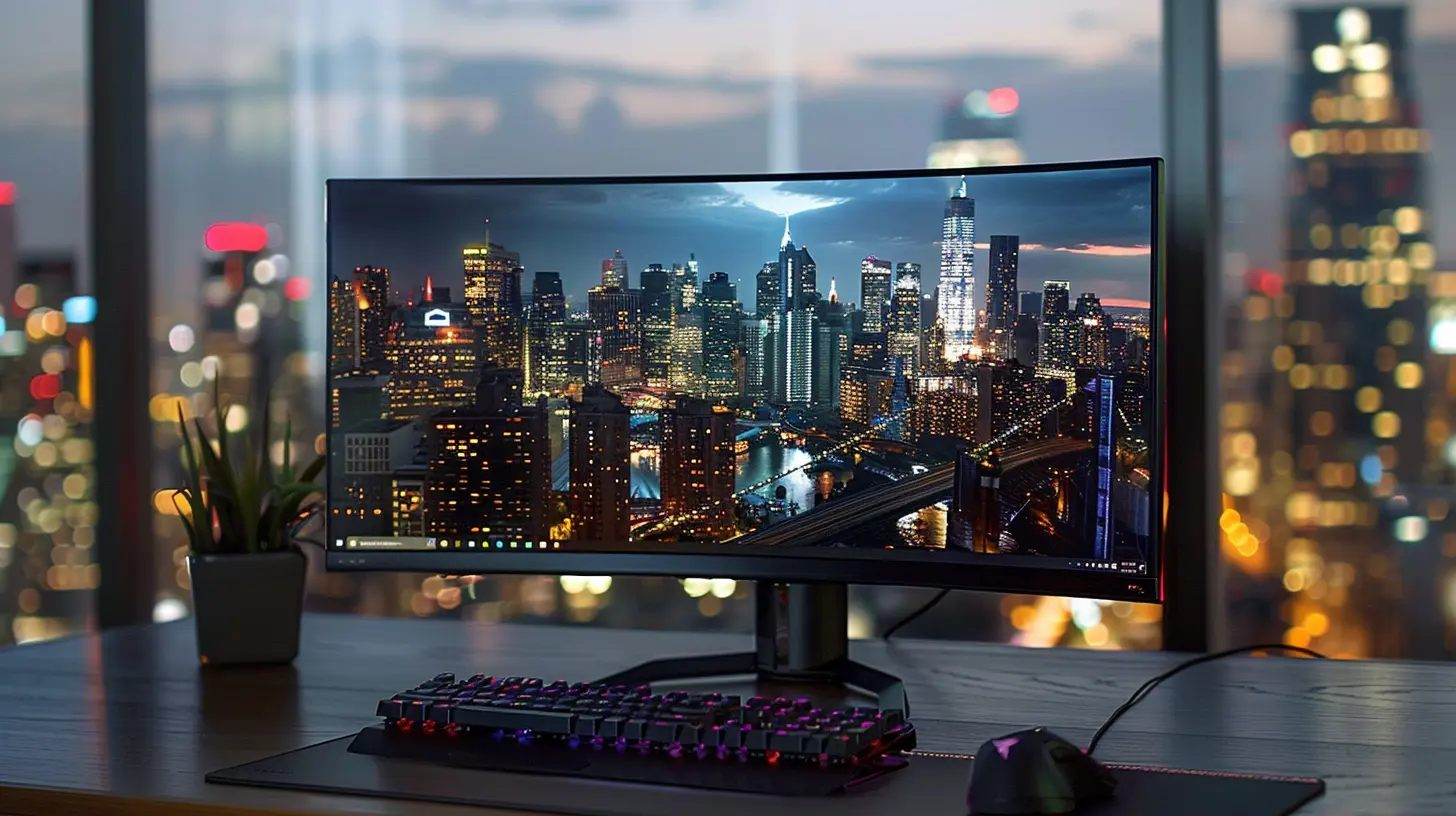How Monitors with High Refresh Rates Improve Gaming Experience
28 May 2025
In the ever-evolving world of gaming, every microsecond can be the difference between loss and victory. At the heart of this is a crucial hardware component that often gets overlooked: your monitor. If you're still gaming on a monitor with a measly 60Hz refresh rate, you might be holding yourself back. High refresh rate monitors, like those clocking in at 120Hz, 144Hz, or even 240Hz, have become a key ingredient in enhancing the gaming experience. But why? What exactly do these higher refresh rates bring to the table? Let's dive right in.
What Is Refresh Rate and Why Does It Matter?
Before we geek out over why higher refresh rates rock, let’s take a moment to understand what refresh rate actually is. In simple terms, a monitor’s refresh rate (measured in Hertz or Hz) is the number of times it refreshes the displayed image per second.So, a 60Hz monitor refreshes the screen 60 times per second, a 144Hz monitor refreshes it 144 times, and so on. The higher the refresh rate, the smoother and more fluid everything appears. Think of it like flipping through a picture book—turn the pages slowly, and the animation is choppy. Speed it up, and it looks like one seamless motion.
Now, why does this matter in gaming? Because games run in real-time. Any lag or choppiness in your display directly affects your gameplay. High refresh rate monitors bridge the gap between your rapid in-game decisions and what you actually see on-screen.
Smoother Gameplay: Say Goodbye to Choppy Visuals
Have you ever been in a heated multiplayer match and noticed jarring, choppy animations that made you miss a crucial shot? That’s probably your monitor struggling to keep up with the game's frame rate. High refresh rate monitors fix this problem by displaying more frames every second, delivering buttery-smooth animations.Imagine you're playing a fast-paced game like Call of Duty or Apex Legends. Every bullet fired, every sprint toward cover, every sudden turn of the camera feels seamless with a high refresh rate monitor. The smoother the visual experience, the better you can immerse yourself in the game.
Improved Reaction Times: Every Millisecond Counts
Gaming is all about speed—speed of thought, speed of action, and, yes, the speed of your hardware. A high refresh rate monitor can actually help you react faster, especially in competitive games where split-second decisions mean everything.Here’s how: when your monitor refreshes more frequently, it delivers updated information to your eyes faster. This reduces input lag—the delay between your actions (like clicking a mouse button or pressing a key) and what you see on the screen. As a result, you’re able to "see" things happen almost in real time, giving you a competitive edge.
Think of it like driving a car. If there’s a delay between when you turn the steering wheel and when the car responds, it’s going to be a pretty rough ride, right? Similarly, in gaming, a lower refresh rate can lead to slower reactions. A 144Hz or 240Hz monitor eliminates that delay, putting you in the driver’s seat and in full control of the action.
Reducing Motion Blur: Clearer Action, Sharper Moves
If you’ve been gaming on a 60Hz monitor, you’ve probably encountered motion blur during high-speed sequences. Motion blur happens because the monitor’s refresh rate can’t keep up with rapid movements, causing the screen to display smeared, blurry images. This can make fast-paced gameplay frustrating and difficult to follow.High refresh rate monitors drastically reduce motion blur, giving you clear, crisp visuals no matter how chaotic the action gets. Whether you’re tracking an enemy across the map in Fortnite or dodging projectiles in Dark Souls, everything appears sharper, making it easier to focus on what matters most: your performance.
Enhanced Immersion: Step Into the Game World
Gaming isn’t just about winning; it’s about being part of another world. High refresh rate monitors amplify this immersion to a whole new level. With smoother visuals and faster response times, you're drawn deeper into the action.Imagine playing an open-world game like The Witcher 3 or Red Dead Redemption 2. The rolling landscapes and action-packed sequences feel alive and cinematic, making it almost like you’re inside the game. You can practically feel the wind on your face as Geralt gallops through a forest or the tension in a shootout at high noon.
Perfect for Competitive Gaming: Dominate the Leaderboards
If you’re a fan of competitive gaming, investing in a high refresh rate monitor is a no-brainer. Games like CS:GO, Valorant, and Overwatch demand lightning-fast reactions and pinpoint accuracy. Even a millisecond’s delay could mean getting sniped or losing a round.Many pro players use monitors with 240Hz refresh rates for good reason. The additional frames give them a distinct advantage over opponents using standard 60Hz or 75Hz monitors. If you’re serious about climbing the ranks, a high refresh rate monitor might just be the secret weapon you’re missing.
Does a Higher Refresh Rate Always Help?
Alright, let’s pump the brakes for a second. While high refresh rate monitors are amazing, they’re not a magic fix for every gamer. Your PC’s hardware also plays a big role.For a high refresh rate monitor to shine, your graphics card needs to pump out enough frames per second (FPS). If you’re stuck at 60 FPS because your GPU isn't powerful enough, upgrading your monitor to 144Hz or higher might not make much of a difference.
So, before you rush out and buy a shiny new monitor, ensure your system can handle higher frame rates.
Do You Really Notice the Difference?
You might be wondering, "Is it really worth it? Will I actually notice the difference between 60Hz and 144Hz or 240Hz?" The answer is a resounding yes! Most people can immediately tell the difference, especially in fast-paced games.It’s like moving from a bicycle to a sports car—once you experience the speed and smoothness, you’ll never want to go back. And even if you’re more of a casual gamer, the improved visuals make the experience more enjoyable across the board.
Things to Consider When Buying a High Refresh Rate Monitor
If you’re ready to make the leap, here are a few things to keep in mind when shopping for a high refresh rate monitor:1. Refresh Rate: Look for at least 120Hz, though 144Hz is the sweet spot for most gamers. If you’re a competitive player, consider 240Hz.
2. Resolution: Higher refresh rates often pair well with resolutions like 1080p or 1440p. Make sure your GPU can handle it!
3. Panel Type: TN panels are faster but have worse color accuracy. IPS panels are slower (though this is improving) but have superior color and viewing angles.
4. Adaptive Sync: Features like NVIDIA G-Sync or AMD FreeSync reduce screen tearing, further enhancing your gaming experience.
Conclusion: Is It Worth the Hype?
In the world of gaming, every tiny advantage counts. High refresh rate monitors give you that edge by delivering smoother gameplay, reducing input lag, and making everything look more fluid. Whether you’re diving into the latest AAA open-world masterpiece or trying to climb the ranks in an online shooter, upgrading to a high refresh rate monitor is a game-changer.Just remember: your monitor is only part of the equation. Pair it with a capable GPU and a solid gaming setup to truly unleash its potential. Once you experience gaming on a high refresh rate monitor, trust me, you’ll wonder how you ever survived without it.
all images in this post were generated using AI tools
Category:
Gaming GearAuthor:

Brianna Reyes
Discussion
rate this article
3 comments
Nala McCool
Upgrading to a high refresh rate monitor is like switching from a tricycle to a sports car—suddenly, you're zooming past everyone while they’re stuck in slow motion! Just be careful not to spill your snacks as you speed through those epic gaming moments!
June 14, 2025 at 4:51 PM

Brianna Reyes
Absolutely! A high refresh rate monitor truly transforms gaming, offering smoother visuals and a competitive edge. Just hold on to those snacks! 🍿🚀
Makayla McLaury
High refresh rates = gaming bliss! 🎮✨
June 4, 2025 at 3:10 AM

Brianna Reyes
Absolutely! High refresh rates enhance smoothness and responsiveness, making every gaming session more immersive and enjoyable. 🎮✨
Cruz McFarlane
Unlock the secret world of gaming; high refresh rates reveal hidden details and elevate your gameplay beyond imagination. Dare to discover?
May 29, 2025 at 4:01 AM

Brianna Reyes
Absolutely! High refresh rates enhance clarity and responsiveness, allowing players to notice subtle details and react faster, truly elevating the gaming experience.



